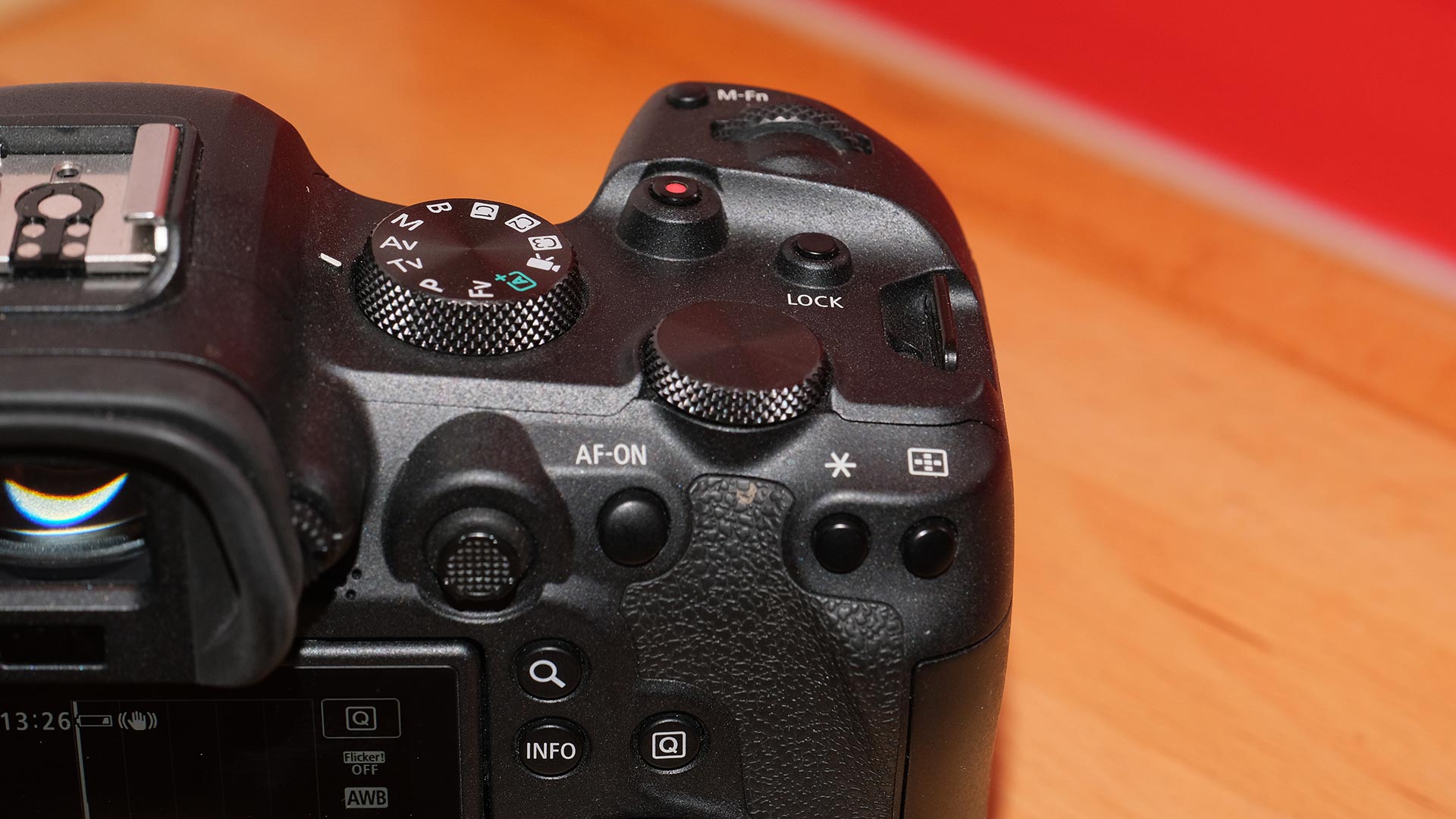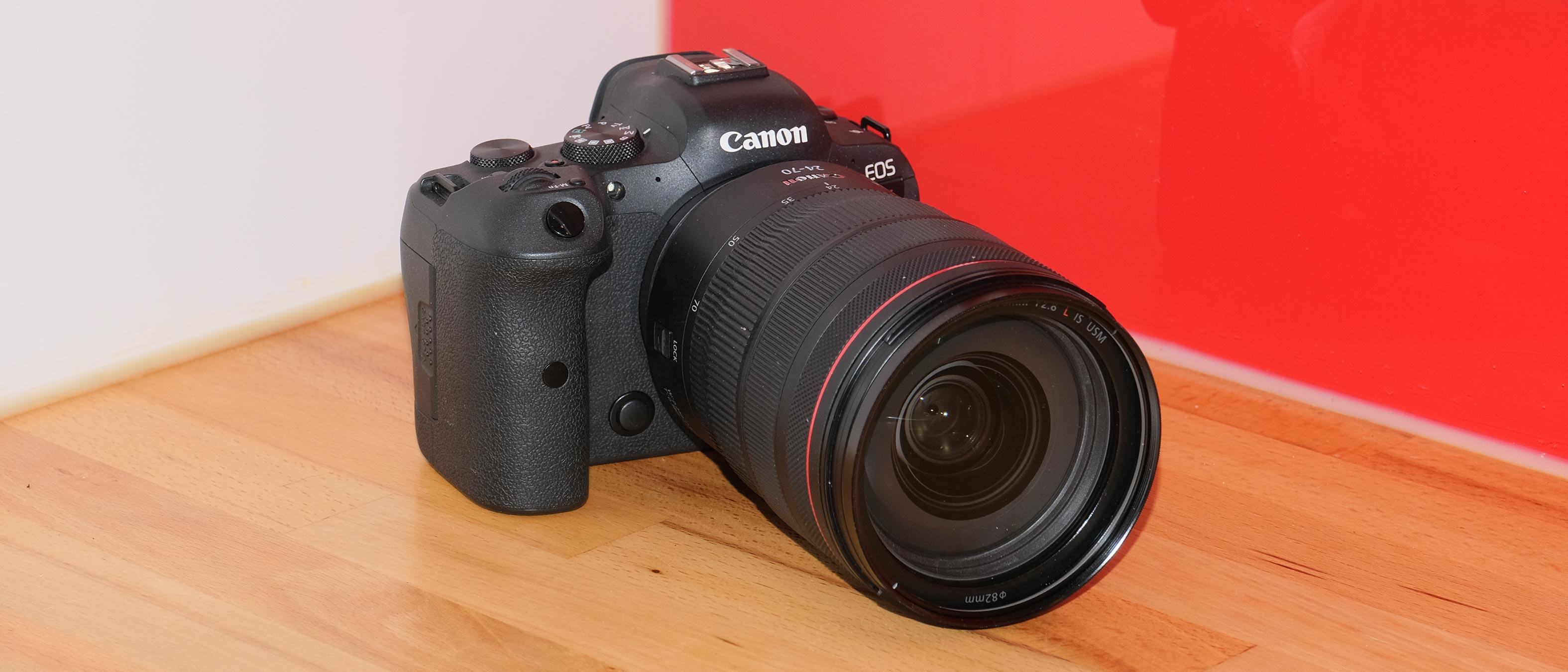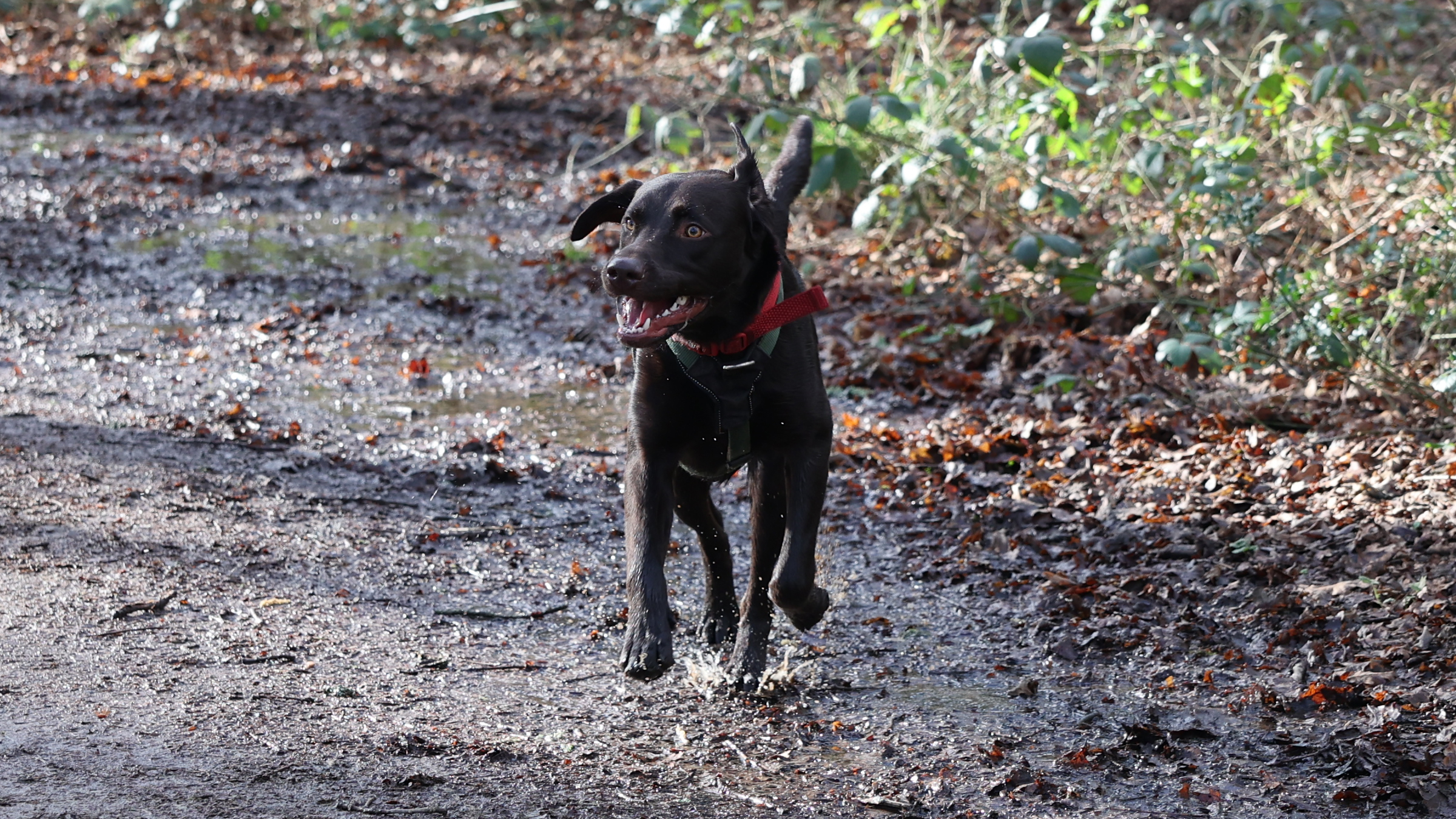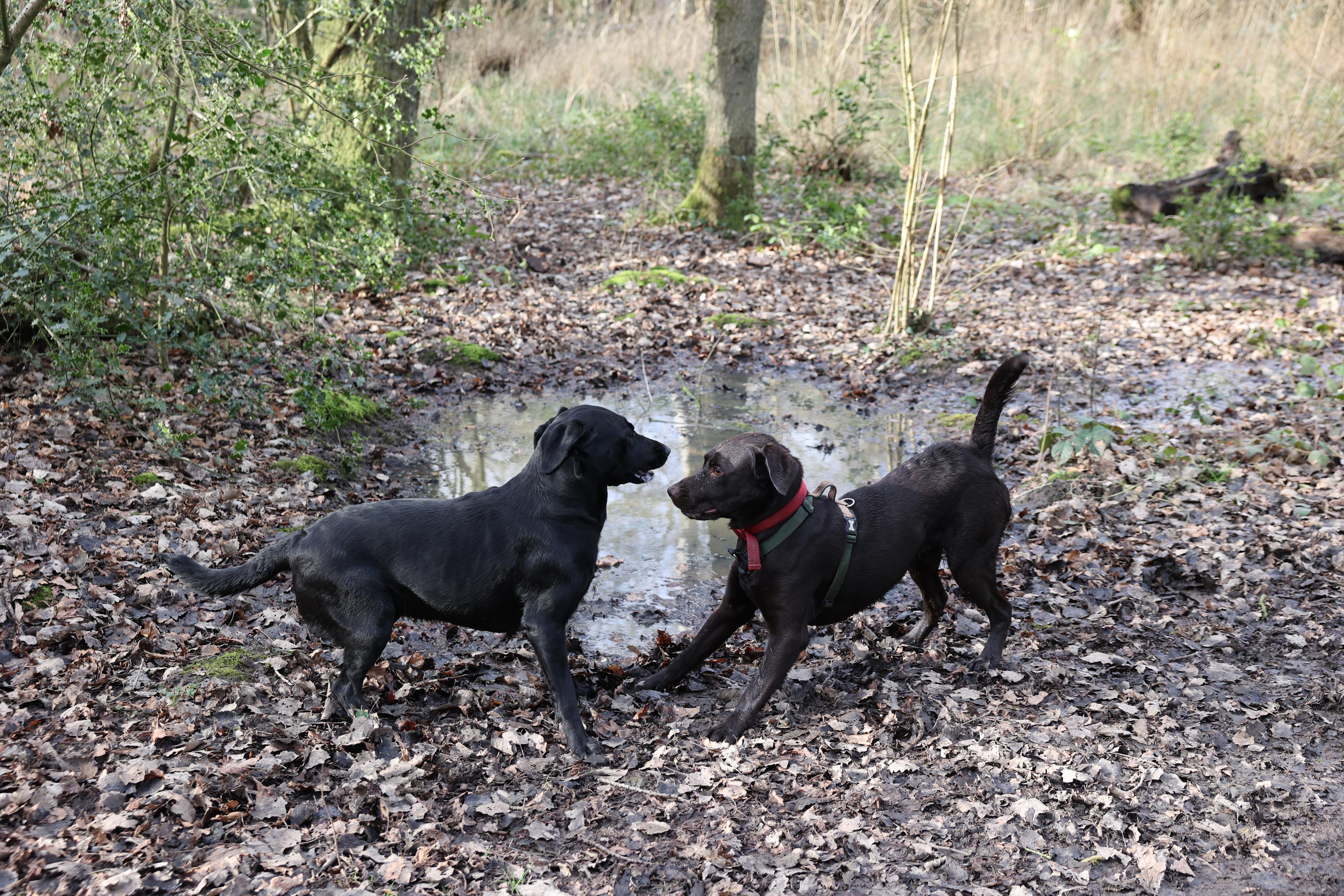Tom's Guide Verdict
The Canon EOS R6 full-frame mirrorless camera offers incredible autofocus, class-leading image stabilization and excellent low-light abilities. It's not cheap and its video skills fall short of the very best, but as an enthusiast stills camera it's easy to recommend.
Pros
- +
Magical autofocus
- +
Class-leading image stabilization
- +
Superior low-light abilities
- +
Crisp and detailed stills
- +
Handles well
Cons
- -
Overheats for 4K video
- -
Resolution lower than rivals
Why you can trust Tom's Guide
Sensor: 20.1MP full-frame CMOS
Image processor: Digic X
Image stabilization: 5-axis, up to 8 stops
AF points: 6,072 Dual Pixel CMOS AF II
Viewfinder: 0.5-inch OLED EVF, 3,690k dots, 100% coverage, 0.76x magnification, 120fps refresh rate
Display: 3-inch fully articulating touchscreen, 1,620k dots
ISO: 100-102,400 (expandable to 50-204,800)
Max video resolution: 4K at 60p, 50p, 30p, 25p, 24p
Ports: USB-C, micro HDMI, mic, headphone, E3 remote, 2x UHS-II SD/SDHC/SDXC
Wireless/Bluetooth: Yes
Shooting speed: 12fps mechanical, 20fps electronic
Battery life (CIPA): 510
Size/weight (body): 5.4 x 3.8 x 3.5 inches; 21 ounces
It took Canon a while to find its feet with mirrorless cameras, but the Canon EOS R6 is proof that those faltering days are well and truly over.
A quick look at its spec list shows it’s capable of going head-to-head with the best mirrorless cameras from Sony, Nikon and Fujifilm and indeed beating them in some regards. How so? Well it’s a 20.1-megapixel full-frame camera that comes with class-leading image stabilization, a 6,072-point dual-pixel autofocus system, 12fps burst shooting, 4K video and high-res OLED electronic viewfinder.
In short, it has almost everything you could want in an enthusiast mirrorless camera, and with only a couple of minor drawbacks. Chief among them are that it lacks the really high megapixel count enjoyed by its more expensive 45MP sibling, the Canon R5 and the similarly priced 33MP Sony A7 IV, while video falls short of the absolute best.
But make no mistake: the Canon R6 is right at the top end of full-frame mirrorless cameras and I’ve enjoyed every second of my time with it. It's an obvious choice for our best mirrorless cameras list, and indeed our best cameras list overall. Find out what makes it so special in this full Canon EOS R6 review.














Canon EOS R6 review: Price and availability
The Canon EOS R6 came out in July 2020 and costs $2,499 for the body alone. It’s also available with two kit lenses: the RF 24-105mm f/4-7.1 IS STM for $2,799 or with the RF 24-105mm f/4 L IS USM for $3,599.
I tested it with the excellent RF 24-70mm F2.8 L IS USM lens, which costs $2,399 on its own. But don’t think you’d have to spend that much, as Canon now has a 24-model strong range of RF lenses, all of which are compatible with the R6. These range from the $199 RF 50mm f/1.8 STM to the $12,999 (yes, really) RF 600mm f/4 L IS USM.
You can also use any of the dozens of older EF lenses by adding a $99 adapter, or there’s a $199 adapter that also gives any EF lens the special control ring function found on all RF lenses. There’s also a battery grip ($349).
Get instant access to breaking news, the hottest reviews, great deals and helpful tips.
To find some discounts, head to our Canon promo codes page.
Canon EOS R6 review: Design

Some of the best mirrorless cameras have real flair about them, but the Canon R6 is not one of them. There’s no retro charm as on Fujifilm’s or Olympus’ cameras and no real attempt to move away from the look of older Canon DSLRs. That’s clearly a deliberate decision, too; Canon’s own marketing for the camera talks about how anyone who’s used an EOS camera before will find it “reassuringly familiar,” and it is. But while that decision makes a lot of sense, it also makes for a fairly nondescript camera.
But looks aside, the R6’s design has a lot going for it. The body is mostly crafted from magnesium alloy but Canon added tactile rubber bits where your hands rest, and the grip is big and provides plenty of purchase. It’s quite a large camera — more than 15% bigger and slightly heavier than the Sony A7 IV, for instance — but it’s very well built, offering full dust and moisture resistance so you can shoot in poor conditions without worrying about damage.
The electronic viewfinder is excellent. It’s a large 0.5-inch OLED EVF with a high resolution of 3,690k dots and a fast 120 fps refresh rate, although its 0.76 magnification is a tiny bit behind its key rivals the Sony A7 IV and Nikon Z7 II. But don’t worry too much about that — it’s big, bright, easy to shoot through and covers 100% of the view.

The LCD screen is similarly impressive. It’s a 3-inch touchscreen LCD panel with a 1,620k dot resolution; while it doesn’t have quite as many pixels as the Sony A7 IV, it beats that rival by being able to flip out and round so you can shoot selfies while seeing what’s on the screen. That’s particularly useful if you use it for video streaming, and it also helps when shooting stills in awkward positions.
One final bonus is that it comes with dual SD card slots; hardly surprising at this price point, but welcome all the same.
Canon EOS R6 review: Controls

When it comes to controls, the Canon R6 feels very DSLR-like. There are certainly plenty of options: 16 buttons plus three control dials, a mode selector, on/off switch and AF joystick. And of course you get touch controls too. Add to that the fact that all RF lenses have an extra control dial on the lens itself, and you have plenty of ways to control the camera.
That doesn’t necessarily mean you’ll always know what you’re doing, though. In theory, the three control dials give you control over your main shooting options, but because they aren’t labelled and can be customized to your heart’s content, you’ll need to spend some time with the R6 before it all becomes second nature.
That’s particularly apparent when you’re changing settings in the R6’s menus, with one control dial scrolling through categories, one moving through pages within each section and the third scrolling through the various options on each page. I regularly found myself using the wrong one and jumping to another section when I just wanted to move down a list — though I imagine I’d get used to it in time. Personally, I prefer Fujifilm’s standard practice of a dedicated ISO dial and aperture controls on the lens, but that might just be familiarity.

Most of the buttons are more straightforward, although several serve more than one purpose depending on what else you’re doing at the time. The inclusion of a dedicated button for rating images seems unnecessary, but the fact there’s a ‘Q’ quick menu option is welcome.
The joystick should be useful, but I found it slightly too shallow for my liking, and my thumb had a tendency to slip off it in use. Then again, autofocus is so special here that you may not use it much anyway.
Canon EOS R6 review: Performance
Autofocus is handled by an incredibly adept dual-pixel CMOS AF II system which offers a scarcely believable 1,053 AF zones and 6,072 AF points. But don’t worry too much about the numbers, because all you really need to know is that it works superbly.
First things first: it’s fast. I would say it’s blink-and-you’ll-miss-it fast, except that it’s probably faster than that, too. Quick as it is to lock on to subjects, though, its tracking capabilities are probably even more impressive. Not only can the R6 focus on and track people and eyes, but it also works with animals (specifically dogs, cats and birds) and vehicles.
Fortunately, I have a suitable test subject in the form of a very energetic 15-month old chocolate Labrador that regularly moves too swiftly and unpredictably for most cameras. The R6 couldn’t quite capture every frame of his leaping and bounding, but it came damn close, giving me a far greater percentage of keepers than I could have hoped for. It’s even advanced enough to track an animal’s eye while it’s moving; truly this is witchcraft.
The below shot is cropped in to show just how good it is — the dog is mid-bound but is perfectly captured and in focus.
What’s more, it has amazing light sensitivity: the EOS R6 can go down as low as EV -6.5, making it possible to lock on seamlessly without hunting, even in dim conditions.
If the autofocus is excellent (and it is), the image stabilization is every bit its equal. As well as having 5-axis IS in the camera body, it can work together with any IS-equipped Canon lenses to provide up to an astounding 8 stops of IS. In practice, I could usually get sharp shots at 2 seconds and sometimes even as much as 4 seconds. Great news for photographers, less so for tripod manufacturers.
The shot below was taken indoors at night, in fairly dim lighting and at f/8 — all conditions which should challenge most cameras. However, the R6 was able to get a super-sharp image at just 1/10 second.
Not all Canon lenses will get the full 8 stops, but even those without lens-based stabilization will get some benefit from the IS and if you’re lucky enough to own one of the five RF lenses that do give you the maximum effect, you’re in for a treat.
Of course sometimes you’ll want a short shutter speed rather than a long one, and here the Canon R6’s burst shooting comes into its own. It’s capable of hitting 12 fps with the mechanical shutter and 20 fps with the electronic one. Almost as importantly, it can do so for absolutely ages; you can take 1,000 JPEGs or 240 RAW images before its buffer fills up, which should be more than enough for anyone.
Canon EOS R6 review: Image quality
With all of the above in mind, it should be no surprise that the Canon EOS R6 takes lovely stills. In fact, the combination of fast and accurate autofocus and subject tracking, speedy burst shooting and excellent image stabilization means that there are very few areas where the R6 trips up at all.
Some people might feel that 20.1 megapixels isn’t enough for them, particularly given that many of the R6’s direct rivals have more — sometimes a lot more. But the relative lack of pixels does have some obvious benefits. Speed is one of them — it’s why the R6 can shoot so fast for so long without filling its buffer — but the other concerns light sensitivity. With fewer pixels packed on to the sensor, the R6 can make each one bigger — and that in turn gives it serious low-light capabilities.
That’s apparent with ISO sensitivity, which goes from 100 up to 102,400 (or 50-204,800 in expanded mode), and which is usable all the way across that range. Sure, at 102,400 there’s a fair amount of noise, but not to the extent that much detail is lost and you could confidently shoot at ISO 6400 the whole time and not regret it.
Below, you can see its ISO capabilities in full effect: on the left is a shot taken at ISO 200, on the right one at 102,400. Sure, the left image is sharper, but you can still clearly make out the shutter speeds etched on to the front of the old film camera.
Though resolution may not be as high as on some cameras, there's still plenty of detail available. In another shot of Rigby the Labrador, you can see individual drops of water on his nose and fine whiskers on his chin.
Fine details are also apparent in this shot of him meeting another Lab, where veins can be seen on individual leaves around their feet.
There are a wealth of different settings to delve into if you want to play around with the R6’s images, including several HDR options. The R6 can also output in the HEIF (High Efficiency Image File Format) format that you might be familiar with from iOS devices. This lets you shoot higher-quality images than JPEGs — they can display 10-bit color rather than 8-bit, but without larger file sizes, for instance. Just bear in mind that to use them you’ll need to enable the HDR PQ setting and use the mechanical shutter.
Canon EOS R6 review: Video
Video is not a particular focus of the R6, so I didn't make it a particular focus of my testing. It's certainly good enough to satisfy a stills shooter who wants to take videos occasionally on vacation, but YouTubers will be better looking at one of the best cameras for vlogging.
As you'd expect, it can shoot 4K video at up to 60fps, albeit with a small crop of 1.07x. There's also 1080p capture at up to 120fps, which could make for some lovely slow-motion videos. Plus, all of the various autofocus modes, and the image stabilization, are available in video as well as with stills.
The quality of the footage isn't the issue here — it's crisp and colorful, while the built-in IS, high sensitivity, full-frame sensor and superb autofocus all help you get smooth, well-exposed and in-focus footage. No, the problem is one of overheating: in 4K mode it gets seriously hot, so Canon limits it to just 30 to 40 minutes of footage if you're shooting at 60 fps. You get more than an hour at slower speeds, and there's no restriction in 1080p mode, but anyone who takes video footage seriously rather than just using it occasionally will probably find it too restrictive.
Canon EOS R6 review: Verdict

The Canon EOS R6 is a superb full-frame mirrorless camera for advanced amateur photographers, particularly those who spend more time shooting moving objects and portraits than they do landscapes.
The combination of incredible autofocus — seriously, it works like magic — with class-leading image stabilization and super-clean high ISO settings mean it's a supremely capable performer in almost every situation. It barely tripped up once in my time with it and if I wanted a camera to take on vacation with me tomorrow, I'd be asking Canon to lend me one.
It's not cheap, but you're getting a lot of camera here and it's no more expensive than its main rival, the Sony A7 IV.
Landscape photographers might prefer a higher resolution and committed YouTubers will also want to look elsewhere, but for anyone else this is an easy camera to recommend.

Formerly Editor in Chief (U.K.) on Tom’s Guide, Marc oversaw all gaming, streaming, audio, TV, entertainment, how-to and cameras coverage, and was also responsible for the site’s U.K.-focused output. He is now U.K. Editor in Chief on TechRadar. Marc previously edited the tech website Stuff and has tested and written about phones, tablets, wearables, streaming boxes, smart home devices, Bluetooth speakers, headphones, games, TVs, cameras and much more. He also spent years on a music magazine, where his duties mainly involved spoiling other people’s fun, and on a car magazine. An avid photographer, he likes nothing better than taking pictures of very small things (bugs, his daughters) or very big things (distant galaxies). When he gets time, he also enjoys gaming (console and mobile), cycling and attempting to watch as much sport as any human can. He's also fallen in love with Wordle over the past six months and is the author of our today's Wordle answer column, in which he supplies hints and strategy tips for the mega-popular word game. Given he's completed every single Wordle so far and only lost once, and analyzed every Wordle answer in search of patterns, he's well qualified to help you safeguard your streak.





